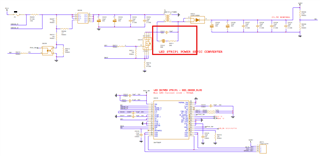Other Parts Discussed in Thread: LP8868Y-Q1, TPS923654
Tool/software:
Hello Ti Support,
I am using the LP8863-Q1, Sepic configuration, with coupled inductors.
Do I need a Poly Capacitor with Resistor in parallel with the Coupling Capacitor?
A prior design incorporated the PCAP and RES. The datasheet indicates that this is not needed when using a coupled inductor.
I prefer not to add these components due to improved layout without them.
Please advise on the advantages or disadvantages of the PCAP and RES components in the design or omitted, as shown below - red box area. The Coupling Ceramic Capacitor is always in-circuit.


